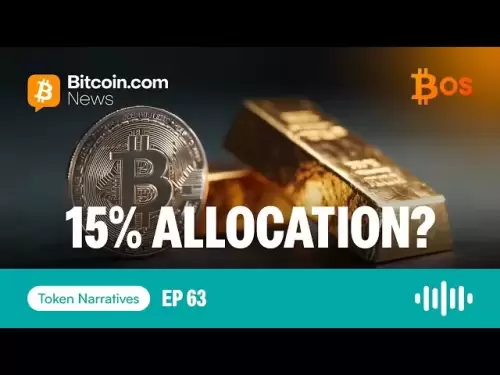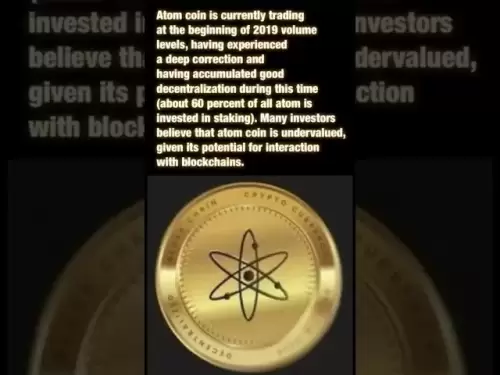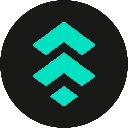-
 Bitcoin
Bitcoin $115200
-2.59% -
 Ethereum
Ethereum $3610
-4.80% -
 XRP
XRP $3.046
-1.70% -
 Tether USDt
Tether USDt $0.9997
-0.01% -
 BNB
BNB $762.6
-4.64% -
 Solana
Solana $168.7
-4.80% -
 USDC
USDC $0.9998
0.00% -
 Dogecoin
Dogecoin $0.2091
-4.05% -
 TRON
TRON $0.3270
-0.48% -
 Cardano
Cardano $0.7335
-3.72% -
 Hyperliquid
Hyperliquid $39.29
-10.55% -
 Stellar
Stellar $0.3999
-2.50% -
 Sui
Sui $3.542
-5.88% -
 Chainlink
Chainlink $16.62
-5.12% -
 Bitcoin Cash
Bitcoin Cash $551.5
-3.74% -
 Hedera
Hedera $0.2544
-3.06% -
 Avalanche
Avalanche $22.11
-4.29% -
 Ethena USDe
Ethena USDe $1.001
0.00% -
 Toncoin
Toncoin $3.523
-1.18% -
 UNUS SED LEO
UNUS SED LEO $8.939
-0.13% -
 Litecoin
Litecoin $106.3
-2.77% -
 Shiba Inu
Shiba Inu $0.00001235
-3.83% -
 Polkadot
Polkadot $3.647
-3.93% -
 Uniswap
Uniswap $9.071
-6.41% -
 Monero
Monero $301.6
-0.77% -
 Dai
Dai $0.0000
-0.01% -
 Bitget Token
Bitget Token $4.331
-3.46% -
 Pepe
Pepe $0.00001064
-5.31% -
 Cronos
Cronos $0.1367
-5.05% -
 Aave
Aave $259.2
-3.66%
How to query blockchain transaction records? Blockchain transaction record example
Blockchain transaction records can be queried using explorers like Etherscan or tools like `bitcoin-cli` by entering a transaction hash or wallet address to view details such as sender, receiver, value, and confirmation status.
Jun 14, 2025 at 01:35 am

Understanding Blockchain Transaction Records
Blockchain transaction records are immutable data entries that represent the transfer of digital assets between wallet addresses. Every transaction is cryptographically signed and stored on a decentralized ledger, ensuring transparency and security. To query blockchain transaction records, users need to understand how transactions are structured, where they are stored, and what tools or methods can be used to retrieve them.
Each blockchain has its own protocol for recording and storing transactions. For example, in Bitcoin, every transaction includes inputs (source of funds), outputs (destination of funds), and metadata such as timestamps and fees. These details are essential when querying transaction history.
Using Blockchain Explorers to Query Transactions
One of the most common ways to view blockchain transaction records is through blockchain explorers. These are online tools that allow users to search for blocks, addresses, and transactions across various blockchains. Popular examples include Etherscan for Ethereum and Blockchair or Blockchain.com for Bitcoin.
To query a transaction:
- Go to the respective blockchain explorer.
- Enter the transaction hash (TXID) or wallet address into the search bar.
- The explorer will display all relevant transaction details including sender, receiver, value transferred, gas fee (if applicable), and confirmation status.
These platforms also allow users to explore raw transaction data, which includes hexadecimal values representing each aspect of the transaction.
Querying via Command-Line Tools and APIs
For developers or advanced users, command-line tools like bitcoin-cli or geth offer more granular control over querying blockchain transaction records. These tools interact directly with a local node or remote RPC server.
An example using bitcoin-cli:
- Start the Bitcoin Core software and ensure it's fully synchronized.
- Open a terminal or command prompt.
- Run the command:
bitcoin-cli gettransaction "txid"Replace
"txid"with the actual transaction hash.
Alternatively, using RESTful APIs provided by services like Alchemy, Infura, or Blockchair enables programmatic access to blockchain data. Developers can send HTTP requests to endpoints that return JSON-formatted responses containing transaction metadata.
Interpreting Raw Blockchain Transaction Data
When querying blockchain transaction records, especially at a technical level, understanding raw transaction formats is crucial. A raw transaction typically includes:
- Version number
- Input count and list of inputs (each containing previous output index and scriptSig)
- Output count and list of outputs (each containing value and scriptPubKey)
- Locktime
This data can be decoded using libraries such as bitcore-lib for Bitcoin or web3.py for Ethereum. Decoding allows developers to parse out meaningful information from the binary or hexadecimal format.
For instance, in Ethereum, a raw transaction may contain nonce, gas price, gas limit, recipient address, value, data, and signature fields. Each of these plays a role in verifying and executing the transaction on the network.
Practical Example: Querying a Real Blockchain Transaction
Let’s walk through an example of querying a real-world blockchain transaction using Etherscan:
- Visit Etherscan.io.
- Copy and paste a known Ethereum transaction hash, such as:
0x5f35d6a1c80c7569f74bfa8f4b54ad272b0c2332993eb905655abda79a5fd0c1 - Click "Search".
The result shows detailed information, including:
- From Address: The sender’s wallet address.
- To Address: The recipient’s wallet address.
- Value Transferred: Amount of ETH sent.
- Transaction Fee: Calculated based on gas used and gas price.
- Status: Whether the transaction was successful or failed.
Users can further inspect internal transactions or token transfers associated with this transaction.
Frequently Asked Questions
Q: Can I query blockchain transactions without knowing the transaction hash?
A: Yes, if you have a wallet address, you can use a blockchain explorer to view all transactions associated with that address.
Q: Is it possible to reverse a blockchain transaction once it's recorded?
A: No, blockchain transactions are irreversible once confirmed. They are permanently recorded on the distributed ledger.
Q: How do I verify if a transaction is confirmed on the blockchain?
A: You can check the number of confirmations next to the transaction on a blockchain explorer. Typically, six confirmations are considered secure.
Q: Are there privacy concerns when querying public blockchain transactions?
A: While blockchain transactions are pseudonymous, they are publicly visible. Anyone with the address can view its transaction history.
Disclaimer:info@kdj.com
The information provided is not trading advice. kdj.com does not assume any responsibility for any investments made based on the information provided in this article. Cryptocurrencies are highly volatile and it is highly recommended that you invest with caution after thorough research!
If you believe that the content used on this website infringes your copyright, please contact us immediately (info@kdj.com) and we will delete it promptly.
- SPX6900, BlockDAG, and Miner Sales: A New York Minute on Crypto Trends
- 2025-08-01 23:30:15
- BlackRock, XRP ETF, and Ripple: Is the Perfect Storm Brewing?
- 2025-08-01 22:50:11
- Dogecoin's Bullish Engulfing Pattern: Is a Major Price Move Imminent?
- 2025-08-01 22:30:12
- Score Big with bet365 Bonus Code BOOKIES: Your Ticket to NFL, MLB, and WNBA Action!
- 2025-08-01 22:30:12
- SportsMillions Promo Code & Bonus: Your Ticket to Social Sports Action
- 2025-08-01 22:50:11
- BetMGM Bonus Code BOOKIES: Your Ticket to NFL, MLB & WNBA Action (and More!)
- 2025-08-01 22:55:54
Related knowledge

What is the difference between a blockchain and a database?
Aug 01,2025 at 09:36pm
Understanding the Core Structure of a BlockchainA blockchain is a decentralized digital ledger that records data in a series of immutable blocks linke...

How to start a business using blockchain?
Jul 28,2025 at 12:36am
Understanding the Basics of Blockchain TechnologyBefore diving into the process of starting a business using blockchain, it's crucial to understand wh...

What is a token on the blockchain?
Jul 21,2025 at 07:00am
Understanding the Concept of a TokenIn the realm of blockchain technology, a token is a digital representation of an asset or utility that exists on a...

Can blockchain be used for identity verification?
Jul 18,2025 at 02:14pm
Understanding Identity Verification in the Digital AgeIn the modern digital landscape, identity verification has become a critical component for ensur...

What is a consensus mechanism in blockchain?
Jul 21,2025 at 03:01am
Understanding the Basics of Consensus MechanismsA consensus mechanism is a critical component of any blockchain network. It refers to the process by w...

How to explain blockchain to someone with no tech background?
Jul 18,2025 at 11:08pm
Understanding the Basics of BlockchainTo explain blockchain to someone with no tech background, it's essential to start with simple analogies and avoi...

What is the difference between a blockchain and a database?
Aug 01,2025 at 09:36pm
Understanding the Core Structure of a BlockchainA blockchain is a decentralized digital ledger that records data in a series of immutable blocks linke...

How to start a business using blockchain?
Jul 28,2025 at 12:36am
Understanding the Basics of Blockchain TechnologyBefore diving into the process of starting a business using blockchain, it's crucial to understand wh...

What is a token on the blockchain?
Jul 21,2025 at 07:00am
Understanding the Concept of a TokenIn the realm of blockchain technology, a token is a digital representation of an asset or utility that exists on a...

Can blockchain be used for identity verification?
Jul 18,2025 at 02:14pm
Understanding Identity Verification in the Digital AgeIn the modern digital landscape, identity verification has become a critical component for ensur...

What is a consensus mechanism in blockchain?
Jul 21,2025 at 03:01am
Understanding the Basics of Consensus MechanismsA consensus mechanism is a critical component of any blockchain network. It refers to the process by w...

How to explain blockchain to someone with no tech background?
Jul 18,2025 at 11:08pm
Understanding the Basics of BlockchainTo explain blockchain to someone with no tech background, it's essential to start with simple analogies and avoi...
See all articles

























































































